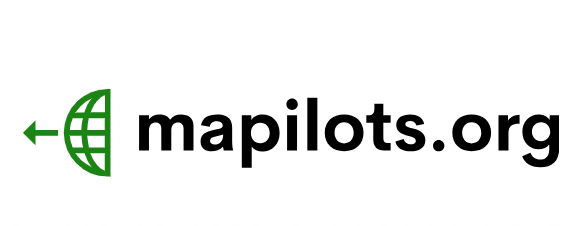Tracking flights in remote areas is a significant challenge for the aviation industry. While advancements in flight tracking technology have dramatically improved the ability to monitor aircraft, areas such as oceans, deserts, and high-altitude regions continue to pose difficulties. In these regions, traditional radar systems are ineffective, and alternative methods are required to ensure flight safety and operational efficiency. This article explores the challenges of tracking flights in remote areas and discusses the technologies and solutions being implemented to overcome these obstacles.
The Limitations of Traditional Radar Systems
Traditional radar systems have been the backbone of flight tracking for many years. However, radar systems rely on line-of-sight communication, which means they cannot track flights over large bodies of water or mountainous areas where the radar signal is obstructed. These limitations make radar-based tracking systems ineffective in remote regions, leaving gaps in the tracking coverage.
In remote areas like the vast oceans or remote mountain ranges, radar signals cannot penetrate far enough to provide real-time information on aircraft positions. As a result, aircraft flying over these areas may be out of radar range for extended periods, making it challenging for air traffic controllers to monitor their progress or respond quickly in case of an emergency.
The Importance of Satellite-Based Systems
To address the limitations of radar tracking, satellite-based systems have become a vital tool in tracking flights in remote areas. Technologies like Automatic Dependent Surveillance-Broadcast (ADS-B) allow aircraft to transmit their location and other critical flight information to satellites orbiting the Earth. These satellites then relay this information to ground stations, enabling continuous tracking of aircraft, even in areas where radar cannot reach.
ADS-B provides a much-needed solution for tracking flights over remote areas such as oceans or deserts. Since satellites have global coverage, they can transmit real-time flight data from virtually anywhere on Earth, regardless of geographic barriers. This technology ensures that air traffic controllers maintain situational awareness of aircraft movements and can intervene if necessary.

Limited Satellite Coverage and Data Gaps
Despite the promise of satellite technology, tracking flights in remote areas still faces challenges related to satellite coverage. While satellite-based tracking systems, such as ADS-B, offer global coverage, some remote regions, such as the polar regions or areas with dense cloud cover, can present data gaps. The availability of satellite coverage can be affected by weather conditions, satellite positioning, or the specific geographic region.
In regions near the poles, for example, there are fewer satellites in orbit, which limits the ability to maintain consistent, real-time tracking. Similarly, regions with frequent cloud cover can sometimes obstruct satellite signals, leading to temporary loss of tracking data. Although the satellite network is vast, it is not always 100% reliable in all areas, which can create gaps in monitoring aircraft over these remote zones.
The Role of Aircraft Communication Systems
In addition to satellite-based tracking, modern aircraft are equipped with various communication systems that play a crucial role in ensuring flight safety in remote areas. These communication systems, such as the Aircraft Communications Addressing and Reporting System (ACARS), allow aircraft to send critical data, including position, altitude, and engine performance, to ground stations even when radar coverage is unavailable.
However, these systems are limited by their range and the availability of ground stations to receive the data. ACARS, for instance, uses VHF radio frequencies or satellite communication systems, and while it works well in areas with sufficient coverage, it can encounter delays or gaps in extremely remote areas where communication infrastructure is sparse. This limitation underscores the need for more comprehensive and advanced technologies to guarantee continuous flight tracking in the most remote parts of the world.
Weather and Environmental Conditions
Tracking flights in remote areas also poses significant challenges due to weather and environmental conditions. Severe weather, such as thunderstorms, hurricanes, or heavy cloud cover, can impede the functionality of satellite systems and communication channels. For instance, in areas with frequent storms or low visibility, the signals from satellites or ground-based systems may be weakened, leading to temporary interruptions in flight tracking.
Additionally, environmental conditions in remote regions can vary significantly, causing complications for both radar and satellite-based systems. For example, high mountains or volcanic regions may disrupt signal transmission, leading to gaps in tracking coverage.
Potential Solutions and Future Developments
The aviation industry is actively working to overcome the challenges associated with tracking flights in remote areas. One key area of focus is expanding satellite coverage by deploying more advanced constellations of low Earth orbit (LEO) satellites. These satellites are positioned closer to Earth than traditional geostationary satellites, allowing for faster data transmission and more consistent tracking coverage in remote regions.
Several private companies are developing LEO satellite networks specifically designed for global flight tracking. These new satellite systems promise to fill the gaps left by traditional satellite-based tracking, providing more reliable and continuous coverage over oceans, deserts, and polar regions. As the technology improves and more satellites are launched, it is expected that flight tracking in remote areas will become more seamless and reliable.
Another promising development is the integration of multiple tracking technologies. For instance, the combination of ADS-B, satellite-based systems, and aircraft communication tools like ACARS can help fill in the gaps during moments of satellite signal disruption. By using a multi-layered approach, the aviation industry can improve the overall robustness of flight tracking systems, ensuring continuous monitoring regardless of environmental conditions or geographical location.
Conclusion
Tracking flights in remote areas presents a unique set of challenges due to the limitations of radar systems, satellite coverage gaps, and environmental factors. However, advancements in satellite technology, aircraft communication systems, and multi-layered tracking solutions are addressing these challenges. As satellite networks continue to grow and become more sophisticated, the ability to track flights across remote regions will improve, enhancing flight safety, operational efficiency, and global connectivity. The continued evolution of these technologies promises to ensure that flights, regardless of their location, remain under constant surveillance, ensuring safer skies for everyone.










